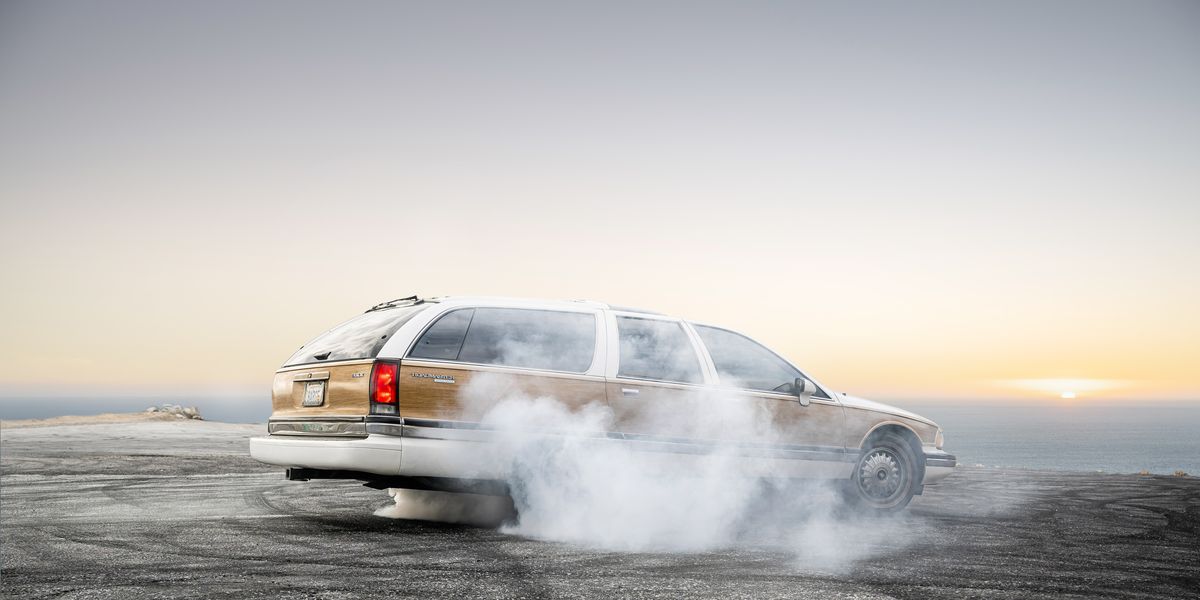The Buick Roadmonster Is a Beautiful, Memorable Dinosaur

An anachronism when new, the final Buick Roadmaster wagon (1991–1996) arrived more than a decade into an era of downsized cars with understated exteriors. It sported skirted fenders, woodgrain paneling, and three rows of seats. When the Roadmaster and its B- platform siblings (the Chevrolet Caprice and the Oldsmobile Custom Cruiser) appeared, almost all new cars were unibody designs. GM’s full-size wagons for ’91 were body-on-frame dinosaurs, with V-8 power and rear-wheel drive—the ideal template for a sleeper muscle car.
The Roadmaster launched as a formal, old-school family hauler. “I think people respected the wagon, although it was a period when wagons were on their way out,” says Ed Welburn, who, before becoming head of General Motors global design, worked on GM’s final rear-drive wagon. Early-’90s families were driving minivans and Ford Explorers. A station wagon was somewhat uncool, in both a school drop-off lane and a staging lane. The Roadmaster’s potential was evident to Martyn Schorr, whose agency handled East Coast public relations for the tri-shield brand during the era. “I managed the build of two Roadmasters for [Buick fanatic] Nicola Bulgari, with 502 crate motors,” Schorr says. These cars, a sedan and a wagon that were the final versions of each body style, were customized by Specialized Vehicles Inc., a respected concept-car fabricator in suburban Detroit.
“Those were serious road warriors—complex, quick, and fast,” Schorr says. “Everything was custom, including the four-wheel Brembo disc brakes, fuel-injection systems for the 502s, custom wheels with cloisonné Buick emblems in the center caps, and NASCAR-type coolers for transmission, the engine, and the rear end.”
Schorr’s builds were freaks at the time. But since then Welburn has seen the GM wagon transition into a modern hot-rod darling. “I noticed it a few years ago, the beginnings of it,” he says. Some friends from Bulgari’s collection recently visited him, arriving in two modified Roadmasters. “It’s an interesting phenomenon,” Welburn says. “It’s hard for me to put ‘performance’ and that vehicle in the same sentence.”
Not every modified wagon suits his taste. “Some look ridiculous,” says Welburn, who prefers stock-looking sleepers with modestly upsized wheels for “a more balanced look.” But he’s open to all modes of vehicular enthusiasm. Boss Wagons ho!
Transplant Recipient
JAMES LIPMAN : JAMESLIPMAN.COM
Automotive photographer and Car and Driver contributor James Lipman sourced a GM E-Rod 6.2-liter V-8 crate engine from someone’s misguided Ferrari 400i restomod project and dropped it into his 1992 Roadmaster wagon. “It’s pretty much plug and play,” he says. “The four-page instructions essentially say: Put it in the car, connect the wiring, drive it.”
Remastered Classic

Ram Photography
While it started life as a Caprice wagon, racer Steve Morris’s longroof has earned its Road master stripes. After the Caprice scraped a wall in a race in 2010, “I decided to make it into a woodgrain station wagon,” he says. Under the hood bulge lives a custom twin-turbo 9.4-liter V-8. “It makes 4500 horsepower. We’re trying to do a five-second quarter-mile.”



